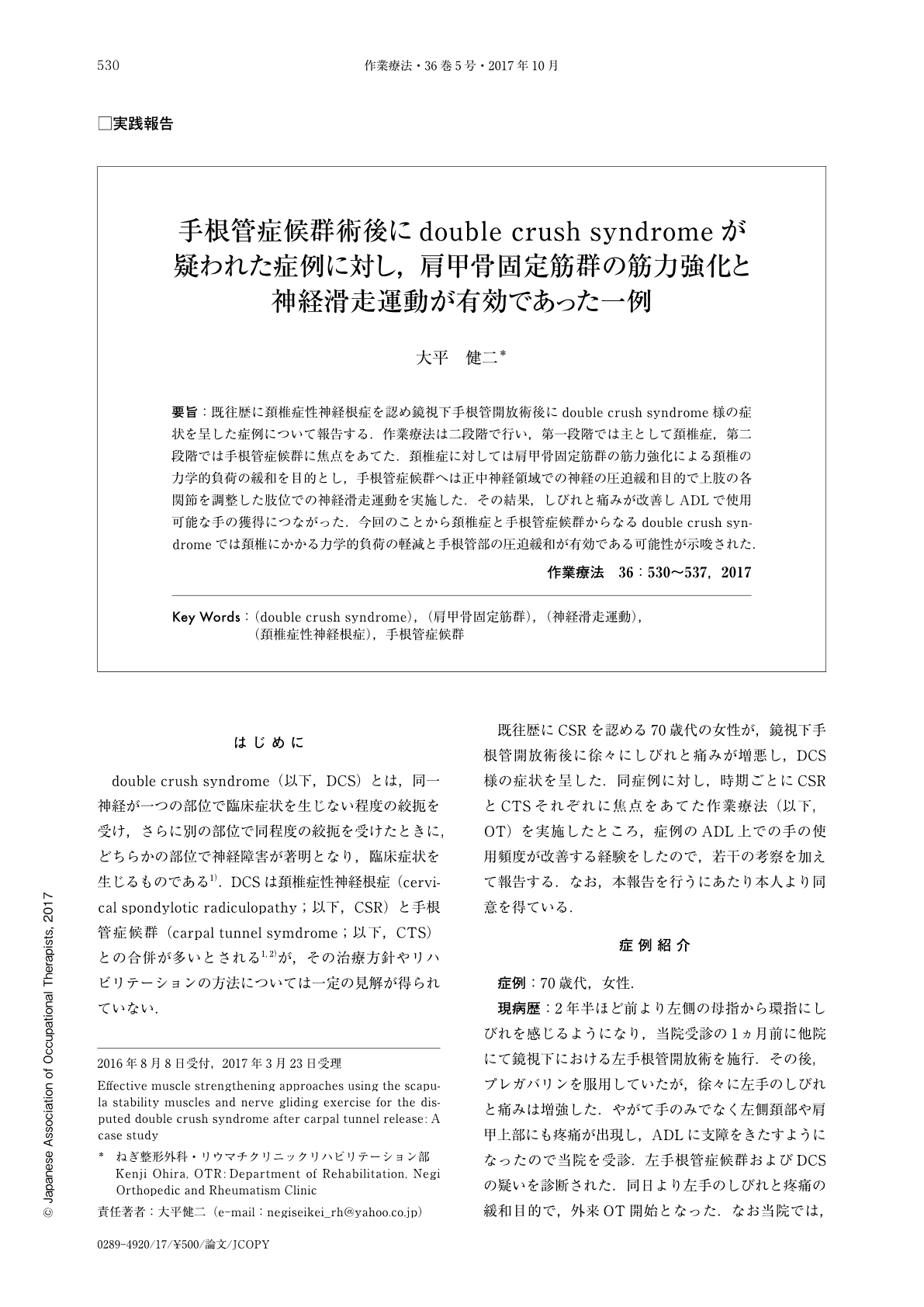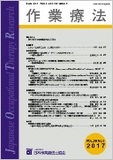Japanese
English
- 販売していません
- Abstract 文献概要
- 1ページ目 Look Inside
- 参考文献 Reference
要旨:既往歴に頚椎症性神経根症を認め鏡視下手根管開放術後にdouble crush syndrome様の症状を呈した症例について報告する.作業療法は二段階で行い,第一段階では主として頚椎症,第二段階では手根管症候群に焦点をあてた.頚椎症に対しては肩甲骨固定筋群の筋力強化による頚椎の力学的負荷の緩和を目的とし,手根管症候群へは正中神経領域での神経の圧迫緩和目的で上肢の各関節を調整した肢位での神経滑走運動を実施した.その結果,しびれと痛みが改善しADLで使用可能な手の獲得につながった.今回のことから頚椎症と手根管症候群からなるdouble crush syndromeでは頚椎にかかる力学的負荷の軽減と手根管部の圧迫緩和が有効である可能性が示唆された.
I report on the occupational therapy of a 70 year old woman, who has been diagnosed with cervical spondylotic radiculopathy, and the disputed double crush syndrome after carpal tunnel release. Occupational therapy had two stages: the symptoms of the cervical spondylosis and the carpal tunnel syndrome. For alleviating the cervical spondylosis, scapula stability muscles, such as the middle and lower trapezius, and rhomboid major and minor, were strengthened. A nerve gliding exercise along the entire length of the affected arm was performed by coordinating each joint of the upper limb in order to improve the excursion of the entrapped nerve. This resulted in the patient regaining ADL in the affected hand. Relieving the force on the cervical spine and the entrapment of the median nerve may be effective in cases of double crush syndrome between the cervical spondylotic radiculopathy and carpal tunnel syndrome.

Copyright © 2017, Japanese Association of Occupational Therapists. All rights reserved.


